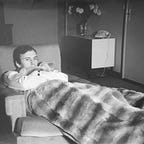Charles Burnett and the L.A. Rebellion
In the early 70s, Black actors told stories that were largely under White direction, often lacking the depth and nuances absent in centralizing African-American stereotypes, driving its plotless pursuits to further misguide a community. But somewhere not too far off from Hollywood itself was an important period of Black cinema waiting to happen.
Charles Burnett always had a deep interest in expressing himself through art at a young age, but the economic pressure to maintain a stable job kept him from pursuing a post-secondary career in the arts. His tumultuous upbringing in Watts was especially true to these conditions, having gained notoriety in the mid 60s as a community that was reputable for inciting numerous deadly riots.
It’s no wonder that a neighborhood would have a significant impact on Burnett’s work, most notably serving as raw and realistic (yet undeniably cinematic) backdrops, which enhance his films’ thematic elements. These include poverty (Killer of Sheep), familial tragedy by way of confronting the traditions of Southern folklore (To Sleep With Anger), and the broadened intimacies that add to his sense of urban totality (My Brother’s Wedding). The poetic accuracy of capturing the lingering mundanity of Black life and poverty on film through an unflinching lens is also a distinct element found in the works of Haile Gerima (Bush Mama) and Carroll Parrott Blue (The Dawn at My Back: A Black Texas Upbringing). It is through this lens as well that we are able to see the organic beauty of these atmospheres are as an important part of what makes Black life on film unique to the human eye. Billy Woodberry’s Bless Their Little Hearts and Julie Dash’s Daughters Of The Dust continues to endure as great proof of just how special it has always been. In addition to this, is through Burnett’s filmography that has placed him alongside his peers at UCLA’s film school, ultimately launching a generation of filmmakers that would shape the face of Black and independent cinema.
The films of Charles Burnett, Haile Gerima, Julie Dash, Billy Woodberry, and Carroll Parrott Blue provided alternatives to Black narratives in Hollywood. It would set a standard in Black filmmaking by creating works of a higher quality that was presented in contrast to the often exploitative nature that 1970s Black cinema was largely comprised of. It portrayed their communities and its people as they were, driven by narrative surrounding the lives of characters whose personal struggles ran deeper than the circumstances they had been placed in, unlike the pimps and hustlers whose animated personalities flooded the crop of Blaxploitation flicks that had reached wider portions of the Black community. Regardless of both of these movements being deeply rooted in independent filmmaking, neither one can coexist without the influence of the other as significant and unique documents of Black life.
The neorealism of Federico Fellini, the disarming hyperrealism of John Cassavetes (as seen in his earliest short Several Friends), the agit-pop of Jean-Luc Godard, and the minimal asceticism of Robert Bresson would have a profound influence on Burnett’s visuals, each of them lingering vignettes that enhanced his themes of personal disturbance and interpersonal uncertainties, whether accompanied to soul staples or standing in silence. The same can be easily said of his filmmaking peers, as these are also influences that the directors of the L.A. Rebellion respectively share. More often than not, Burnett made great use of non-actors in his peers and family members, some of whom went on to pursue successful careers in the Black independent filmmaking circle. In the case of Burnett’s work, the likes of Carl Lumbly and Kaycee Moore come to mind. Rather than approaching the nature of his community through the often degrading lens of Blaxploitation, Charles Burnett’s films merely presented the stagnance of life in these communities as they were through poetic and melancholy-filled nihilism, one devoid of the opportunity to truly escape. However, there are small glimpses of light to be found, and that is why the silence in his films speak volumes.
Charles Burnett would go on to create several documentaries alongside a body of work that not only set the blueprint for the likes of Spike Lee, John Singleton, and Barry Jenkins, but provided some of the most exceptionally diverse films in cinematic history. Despite having a long standing reputation as one of America’s most underappreciated storytellers, it is no wonder that he is also considered as the most gifted Black director to ever exist.
